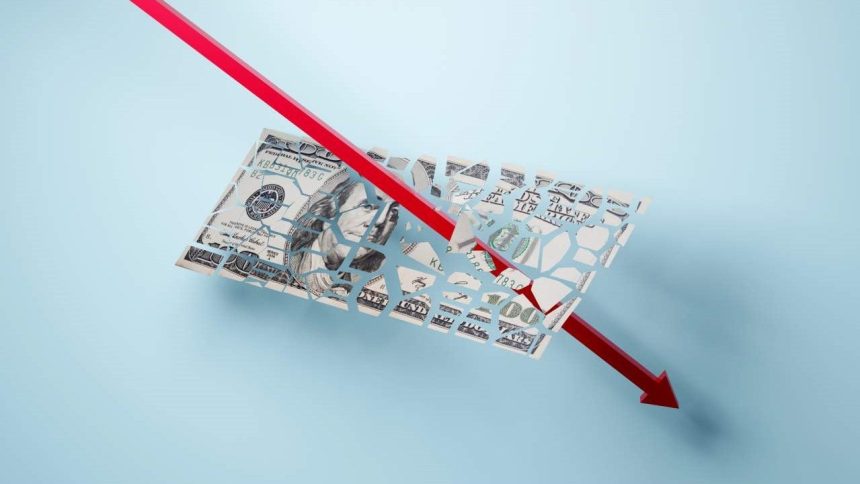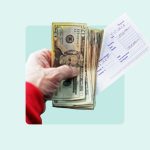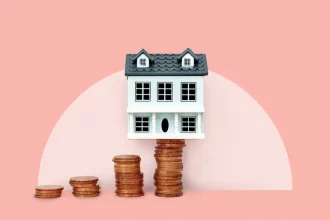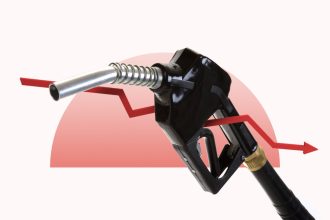Wong Yu Liang/Getty Images
What happens when your high-yield savings account (HYSA) isn’t so high-yielding anymore? Millions of savers are finding out the hard way that the yields they signed up for during the halcyon days of 2023 are no more and that their new savings rate is noticeably lower.
Federal Reserve Chair Jerome Powell has also recently signaled at the Jackson Hole Symposium that the U.S. central bank could cut interest rates as soon as its next meeting in September, which could further impact what savers earn in the near future.
Lower rates are not a trivial problem. The average annual percentage yield (APY) on savings accounts has already taken a plunge over the past two years and in some cases is more than 1 percentage point lower than it was when savers first opened their accounts. This could mean a difference of hundreds or even thousands of dollars a year, depending on your account balance.
Savings rates aren’t fixed — they’re variable
The biggest misconception about HYSAs is that the APY is guaranteed. It isn’t. Unlike certificates of deposit (CDs), where you lock in a fixed rate for a term, savings APYs are variable. That means the bank or credit union can raise or lower the rate at any time.
And they often do.
Rates usually adjust based on the federal funds rate — the benchmark interest rate set by the Fed. When the Fed raised rates aggressively in 2022 and 2023, banks responded by hiking the yields they offered to attract deposits. But in 2024 and into 2025 many banks have been quietly trimming those savings rates. Why? Because once a bank has built up enough deposits, it no longer needs to pay top dollar to keep attracting more.
That’s the part savers often miss: unless you’re checking, your so-called high-yield account might have drifted down to 3 percent — or less. With inflation running around 2.5-3 percent, that means you’re essentially treading water.
Here’s what to do about it.
1. Check your rate, don’t assume you’re still getting a high yield
Don’t let banks bank on your inertia. Make it a habit to:
- Log in once a month and confirm your APY. Banks will often lower what they pay in interest rates with much less fanfare than when they were raising rates.
- Compare quarterly against top-yielding accounts. If your savings rate is lagging the leaders by 0.5 percent or more, that’s a signal to move.
Remember: moving your money is easier than ever. Online transfers between banks typically clear in 1-3 days, and many banks will make it super easy to switch.
2. Consider alternatives that can beat savings accounts
Savings accounts are safe and liquid, but they’re not your only option. If your balance is significant — say, $10,000 or more — small percentage differences add up fast. On $25,000, the difference between a 3 percent and 5 percent yield is $500 a year.
Here are some of the most reliable alternatives:
Treasury bills (T-bills): backed by the U.S. government
- What they are: Short-term government bonds sold in terms as short as 4 weeks and as long as 52 weeks. You can buy them directly from the U.S. Treasury using TreasuryDirect.gov or through a brokerage account such as Schwab or Fidelity.
- Why they’re better: T-bills are currently yielding close to or above 4 percent, higher than some savings accounts. Once you buy, your rate is locked in for the term — no bank can quietly lower it.
- Why they’re safe: They’re backed by the full faith and credit of the U.S. government, widely regarded as the safest borrower in the world. If you can set aside cash for a few weeks or months, T-bills are tough to beat.
Brokerage cash accounts: flexible and competitive
- What they are: Cash accounts offered through major brokerages (Fidelity, Schwab, Vanguard, etc.) that sweep your idle cash into FDIC-insured partner banks or money market funds.
- Why they’re better: Yields tend to move quickly with interest rate changes, and many brokerages still pay upward of 4 percent. Unlike big banks, they’re competing aggressively for deposits.
- Why they’re safe: When structured as bank sweep programs, balances are spread across multiple partner banks and insured by the FDIC up to standard limits, just like a traditional savings account.
Money market mutual funds: strong yields with low risk
- What they are: Pooled investment funds that typically hold short-term, high-quality securities such as U.S. Treasurys or commercial paper. They’re not bank accounts, but they aim to keep each share worth $1.
- Why they’re better: Yields often adjust faster than traditional savings accounts — meaning they’ll rise (or fall) in closer step with the Fed’s interest rate moves. Right now, many money market funds yield close to 5 percent.
- Why they’re safe: While not FDIC-insured, money market funds are known for their stability and are generally considered very low risk. They’re used heavily by institutional investors and offer same-day liquidity.
Certificates of Deposit (CDs): guaranteed returns
- What they are: Time deposits from banks or credit unions where you agree to lock up your money for a fixed term, such as six, 12 or 24 months. In exchange, you get a fixed interest rate.
- Why they’re better: CDs remove the uncertainty of variable APYs. If you lock into a 12-month CD at 5 percent, you’ll earn 5 percent for the entire year — even if regular savings rates fall. This is also true for longer terms, such as 48-month or 60-month CDs. But keep in mind, some CDs are callable meaning a bank can “call in” the CD and stop offering the rate at any time. You’ll get your money back, and then you’ll have to find a new place to invest it.
- Why they’re safe: CDs are FDIC-insured (or NCUA-insured at credit unions) up to $250,000 per depositor, per institution, per ownership category. The only trade-off is reduced liquidity — you’ll typically pay a penalty if you need to withdraw early.
3. Diversify your cash “parking spots”
Think of your savings in layers:
- Emergency layer (1-2 months): Keep in an HYSA for instant access, even if the rate drifts down.
- Short-term goals (3-9 months away): Consider CDs or T-bills, which guarantee or lock in your return.
- Medium-term cash (9-24 months): Brokerages and money market funds offer liquidity and higher yields.
This way, you’re not scrambling every time a bank trims its rate, and you’re earning competitively across your cash holdings.
Bankrate’s take
Building your savings — especially during these uncertain financial times, exacerbated by stubborn inflation and tariffs — is critical to having financial security. In Bankrate’s 2025 Emergency Savings Report, nearly one-quarter (24 percent) of Americans surveyed said they have no emergency savings at all, while 46 percent said that they have only enough saved to cover three months’ worth of expenses. Let Bankrate provide you with the insights and resources to save confidently in How to start (and build) an emergency fund.
4. Watch for red flags from your bank
A few signs that it’s time to move on:
- Your bank cut rates multiple times while competitors held steady.
- Your APY has dropped below 3 percent, putting you near the current rate of U.S. inflation.
- Customer service or account features haven’t kept pace with online banks.
In today’s market, anything under 4 percent should raise eyebrows.
Did you know?
According to Bankrate’s 2025 Checking Account Fee Survey, Americans with a checking account have held onto their account for an average of 19 years, while those with a savings account have had it for 17 years. Now that’s bank loyalty. But if your bank isn’t giving your money the love it deserves — be it in lower APYs or diminished customer service — then it’s time to break up with your bank and look for another. Doing so isn’t as difficult as you think. Read how in Bankrate’s guide How to break up with your bank (and take your money somewhere better).
Bottom line
The appeal of high-yield savings accounts was that they finally rewarded savers after years of near-zero returns. But “high yield” doesn’t always stay high.
If you opened your account last year at 5 percent, and it quietly slipped to 3 percent or less, you’re effectively losing purchasing power against inflation. Don’t settle. Check your rate, move your money if necessary, and use tools such as CDs, T‑bills or brokerage-linked accounts to lock in more dependable returns.
Your cash is too valuable to leave sitting idle. A few minutes of action today can mean hundreds of extra dollars in your pocket by year’s end.
Why we ask for feedback
Your feedback helps us improve our content and services. It takes less than a minute to
complete.
Your responses are anonymous and will only be used for improving our website.
Help us improve our content
Read the full article here
















